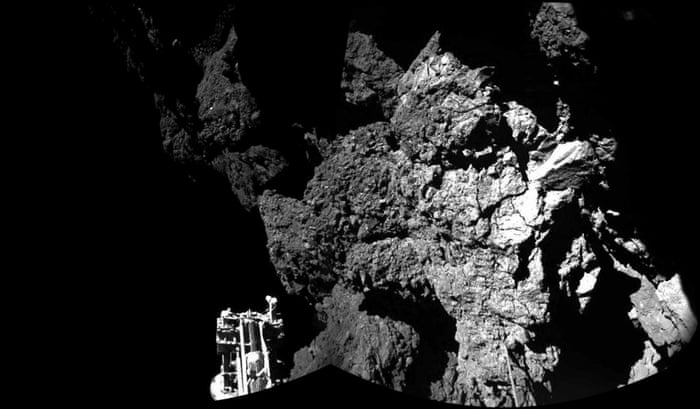 |
| Rosetta’s lander Philae is safely on the surface of Comet 67P/Churyumov-Gerasimenko, as these first two CIVA images confirm. One of the lander’s three feet can be seen in the foreground. |
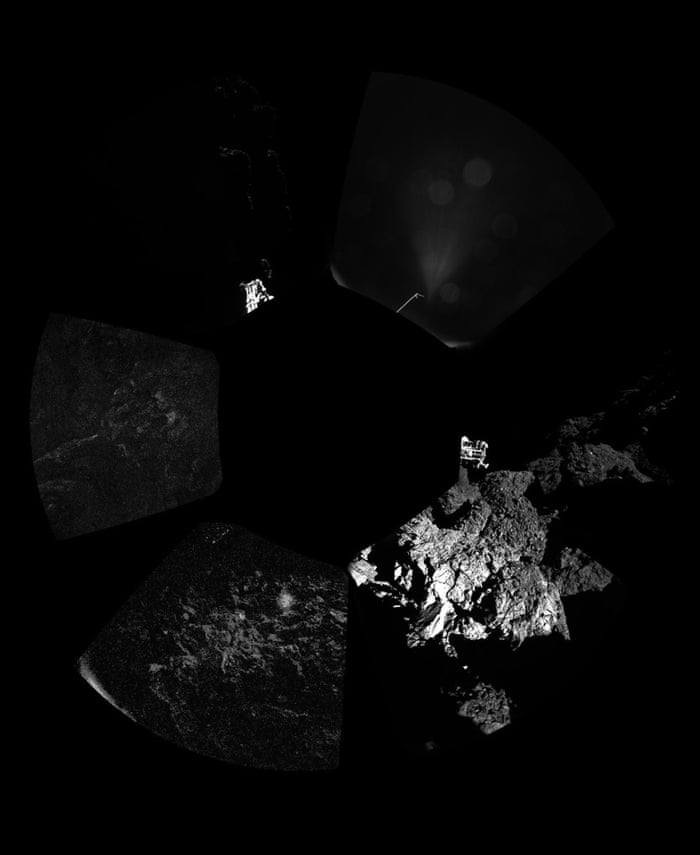 |
| This panoramic image series shows the wall of rock in front of Philae, captured by its ÇIVA-P imaging system. Six identical micro-cameras are designed to take pictures of the surrounding surface. A spectrometer then studies its composition, texture and albedo (reflectivity). |
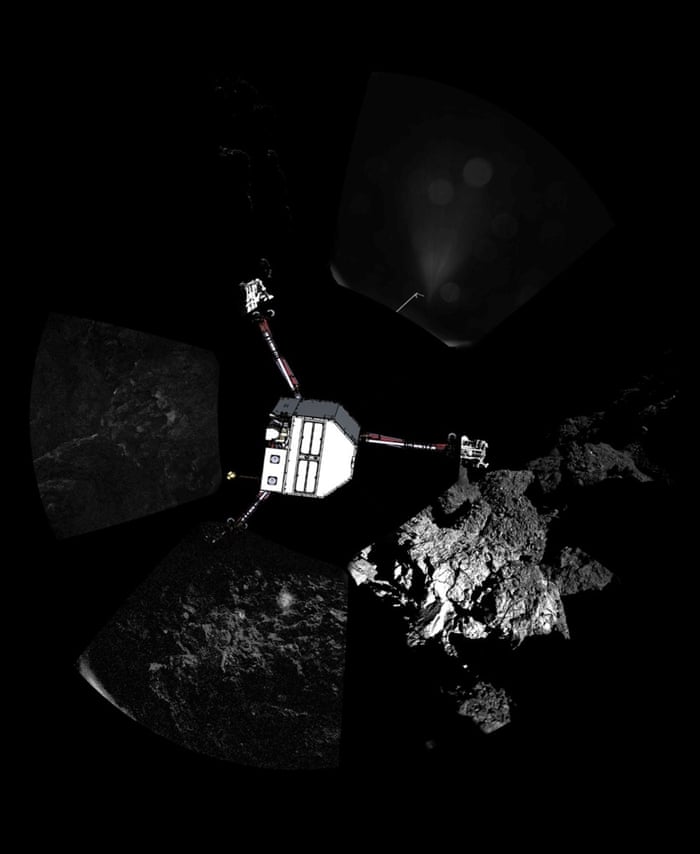 |
| Using the same panoramic image series, the Philae lander team have superimposed a sketch showing their best guess for the orientation of the craft relative to its surroundings. |
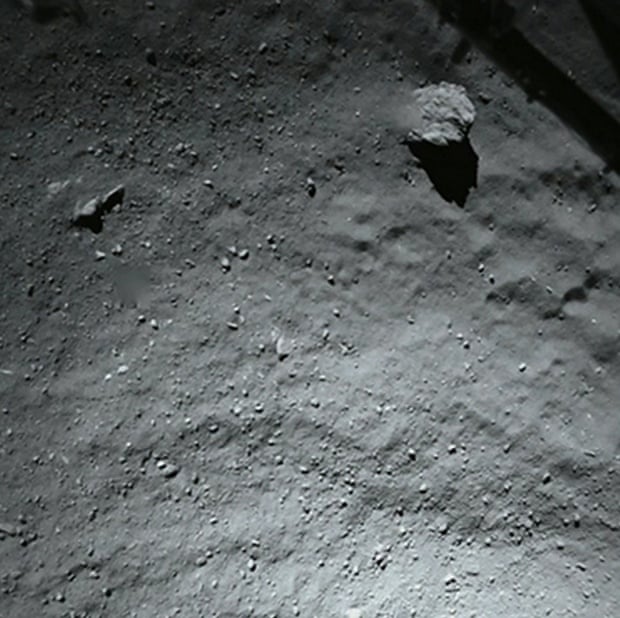 |
| Philae tweeted on Thursday morning: ‘Another stunning image of my new home taken by ROLIS during #CometLanding yesterday, when I was just 40 m from #67P.’ |
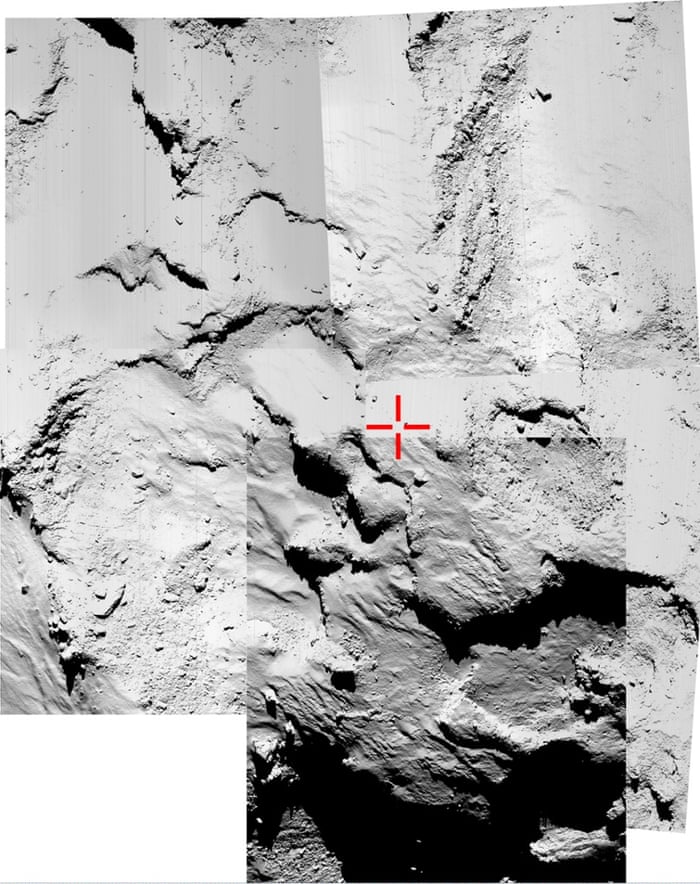 |
| This five-image montage from the OSIRIS camera is being used to identify the final touchdown site. The images were taken around the time of landing on Wednesday when Rosetta was about 16 kilometres from the comet surface. They are overexposed – subsequent images will be more accurately exposed, making it easier to spot the lander, say scientists |
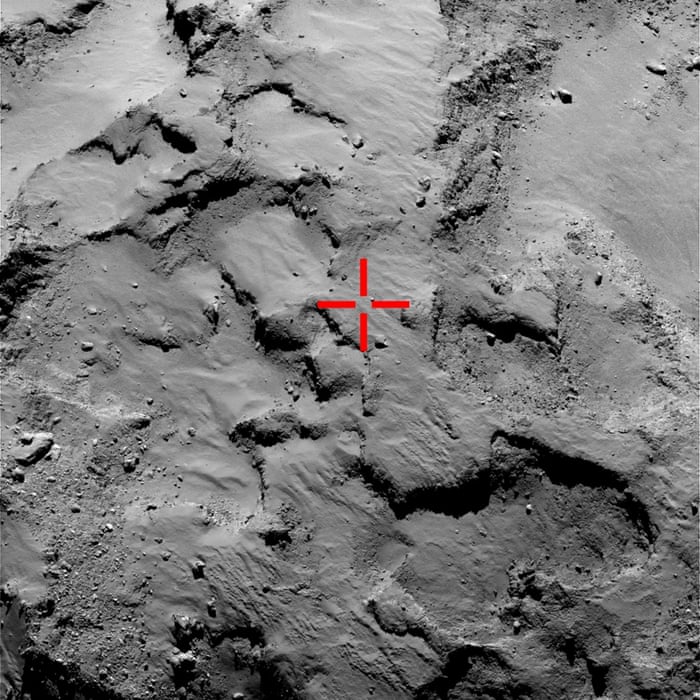 |
| The lander has not yet been located. This image was taken by OSIRIS back in September. The cross-hairs show the location where Philae first hit the ground – almost exactly at the intended target. Two slow-motion bounces followed |
 |
| This OSIRIS wide-angle camera image shows the position of Rosetta’s lander Philae (circled) at 14:19:22 GMT as it fell towards the comet. |
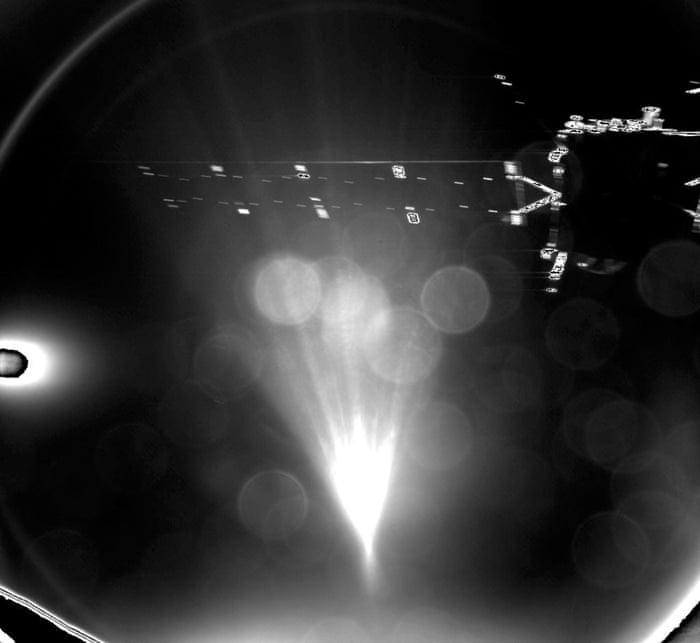 |
| This image, taken with the lander’s CIVA-P imaging system shortly after release, captures one of Rosetta’s 14 metre-long solar arrays. |
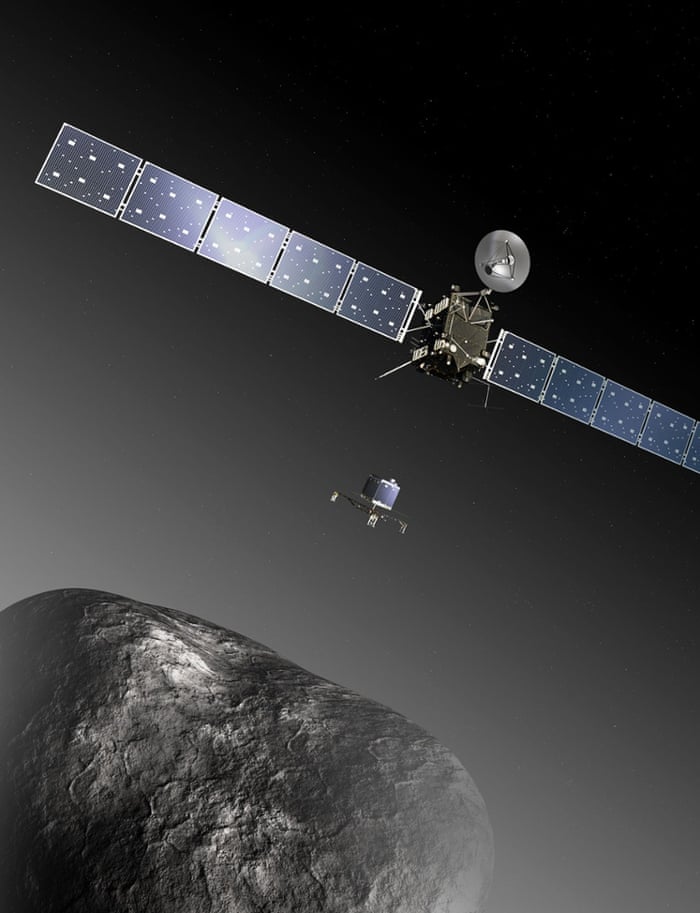 |
| An artist’s impression of the Rosetta orbiter deploying the Philae lander. The image is not to scale; the Rosetta spacecraft measures 32 metres across including the solar arrays, while the comet nucleus is thought to be about 4 kilometres wide. |
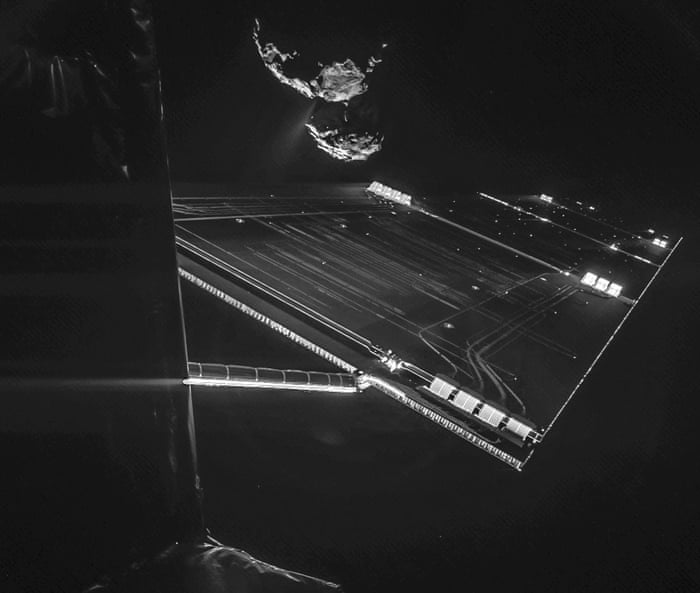 |
| A picture taken with the CIVA camera on the Philae lander, before release, shows comet 67P/ChuryumovGerasimenko from a distance of about 16 kilometres. The ‘selfie’ was taken on 7 October and captures the side of the Rosetta spacecraft and one of its 14-metre-long solar wings. |